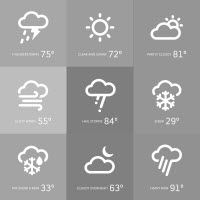SACRAMENTO, Calif. – Californians may be experienced with warm weather driving, but the California Highway Patrol (CHP) and the California Office of Traffic Safety (OTS) warns that summer presents a new set of challenges on the roads.
“Carefree summer travel requires extra care by motorists to make sure the trip is not ruined by problems,” CHP Commissioner Joe Farrow said. “Drive at a safe speed, maintain your vehicle, and be aware of the challenges of summer driving.”
Some of the hazards of summer driving:
· Leaving children or animals in a vehicle – dangerous at any time of year – becomes extremely dangerous. Be sure that all children are properly restrained in a safety seat or booster seat when driving.
· More new drivers, generally young and inexperienced, will be on the road when school is not in session.
· Visitors not only generate more traffic on the roadways, but those who are unfamiliar with an area may be distracted looking for landmarks and exits.
· High temperatures may create problems for tires and engines. Hot weather can lead to blowouts in tires that have not been well maintained.
· More bicycles, motorcycles and pedestrians are on the roads. Pedestrians can be unpredictable and hard to see, especially in bad weather or after dark.
· Forest and grass fires generate smoke, reducing visibility and sometimes causing road closures. More emergency vehicles may be on the road in a fire area. Check for road reports before you leave home.
“When school is out and temperatures climb, family travel can be a happy occasion,” said OTS Director Rhonda Craft. “We can make sure it stays that way with a little trip planning and attention to safe driving.”
OTS also reminds drivers to make safety a priority:
· Buckle Up. Every Trip. Every Time.
· If you have a vehicle issue, drive out of traffic lanes and off the highway if possible – freeway shoulders are not a safe place for repair work.
· Research road conditions and closures before getting in the car. Visit www.quickmap.dot.ca.gov for real time highway conditions.
A few more tips for safe summer driving from the CHP:
· Vehicle care is critical: oil changes, cooling system, tires, belts and hoses, and windshield wipers and wiper fluid should all be well maintained.
· Carry a roadside emergency kit with fresh water, cell phone, first aid kit, flashlight, flares and a white flag, jumper cables, jack (and ground mat) for changing a tire, work gloves, basic repair tools and duct tape, a jug of water and paper towels for cleaning up, nonperishable food, extra windshield washer fluid, and maps.
The mission of the California Highway Patrol is Safety, Service, and Security.
“Carefree summer travel requires extra care by motorists to make sure the trip is not ruined by problems,” CHP Commissioner Joe Farrow said. “Drive at a safe speed, maintain your vehicle, and be aware of the challenges of summer driving.”
Some of the hazards of summer driving:
· Leaving children or animals in a vehicle – dangerous at any time of year – becomes extremely dangerous. Be sure that all children are properly restrained in a safety seat or booster seat when driving.
· More new drivers, generally young and inexperienced, will be on the road when school is not in session.
· Visitors not only generate more traffic on the roadways, but those who are unfamiliar with an area may be distracted looking for landmarks and exits.
· High temperatures may create problems for tires and engines. Hot weather can lead to blowouts in tires that have not been well maintained.
· More bicycles, motorcycles and pedestrians are on the roads. Pedestrians can be unpredictable and hard to see, especially in bad weather or after dark.
· Forest and grass fires generate smoke, reducing visibility and sometimes causing road closures. More emergency vehicles may be on the road in a fire area. Check for road reports before you leave home.
“When school is out and temperatures climb, family travel can be a happy occasion,” said OTS Director Rhonda Craft. “We can make sure it stays that way with a little trip planning and attention to safe driving.”
OTS also reminds drivers to make safety a priority:
· Buckle Up. Every Trip. Every Time.
· If you have a vehicle issue, drive out of traffic lanes and off the highway if possible – freeway shoulders are not a safe place for repair work.
· Research road conditions and closures before getting in the car. Visit www.quickmap.dot.ca.gov for real time highway conditions.
A few more tips for safe summer driving from the CHP:
· Vehicle care is critical: oil changes, cooling system, tires, belts and hoses, and windshield wipers and wiper fluid should all be well maintained.
· Carry a roadside emergency kit with fresh water, cell phone, first aid kit, flashlight, flares and a white flag, jumper cables, jack (and ground mat) for changing a tire, work gloves, basic repair tools and duct tape, a jug of water and paper towels for cleaning up, nonperishable food, extra windshield washer fluid, and maps.
The mission of the California Highway Patrol is Safety, Service, and Security.
